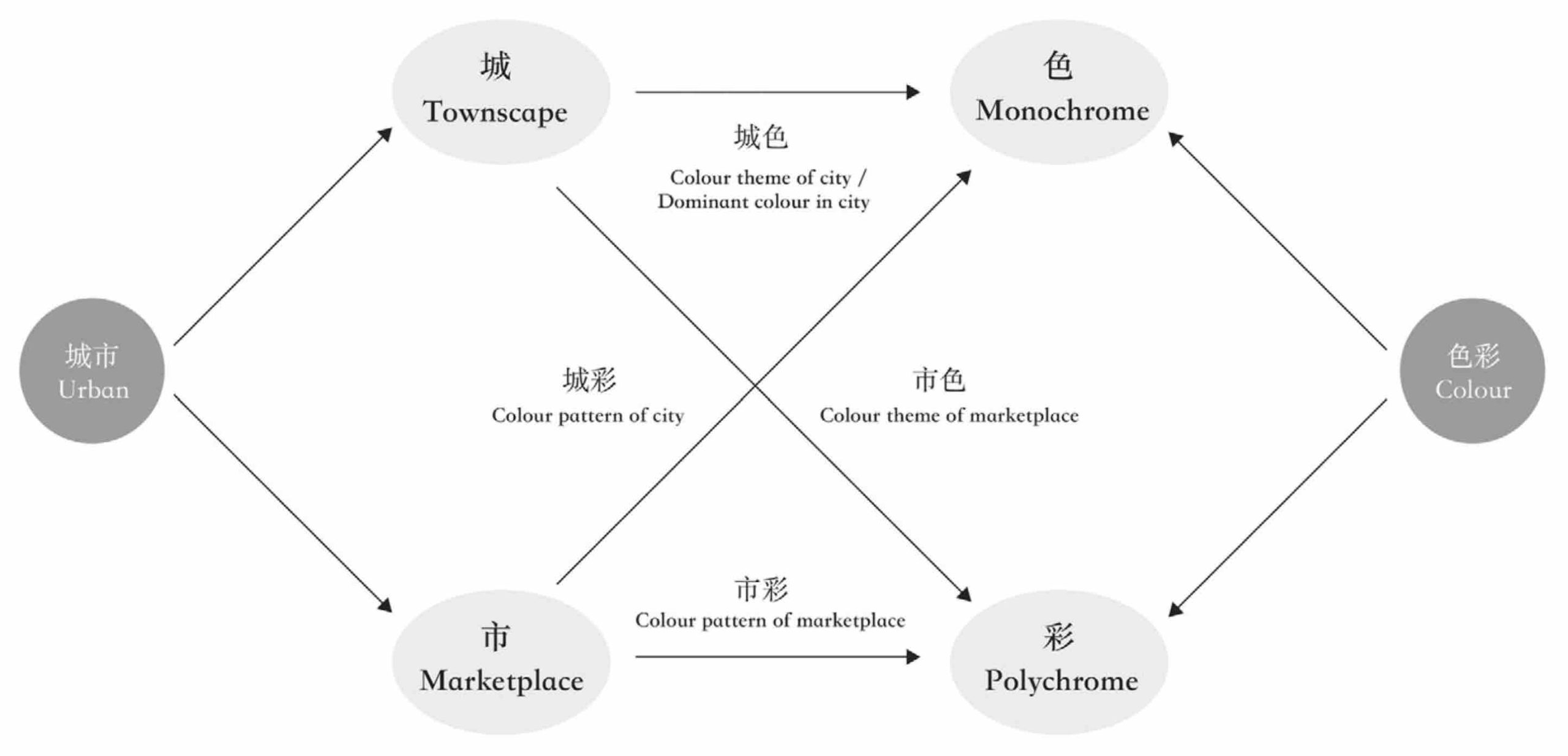The development of urban color planning and design has evolved alongside massive urbanization in China over the past two decades. In this field, Jianming Song has become one of the most profound practitioners, having carried out hundreds of urban color projects since the turn of the millennium.
This study aims to answer the question: What can be learned from these projects to provide useful knowledge for future urban development? In response to the complexity of the urban context and the relationship between urban space and colorscape, Song utilizes linguistics-based design methodologies as an effective way to solve practical problems. This article articulates the application of linguistics in urban typology, color narratives, and the development of color themes.

Figure 1: The traditional colorscape in Suzhou (left), Xiamen (center), and Pingyao (right), China. The three images demonstrate the color character of traditional landscape; the colors palettes are established from the photographs through software analysis. (Jianming Song, 2018).
The study also identifies an integrated methodological framework that include the perspectives of ontology, epistemology and methodology. The research findings point to a renaissance of traditional culture implemented in contemporary design practice. Urban color planning and design is the product of local, social, economic, and political relations. The research encourages local knowledge combined with intellectual analysis to contribute to the design revolution in urban development.

Figure 2: Jianming Song’s theoretical framework “Chi-Shi-Se-Cai” (城市色彩) (Color of the City). (Diagram: Jie Xu).
Read the full paper
Xu J. (2023) “A linguistic approach to urban color design and research – Exploring Jianming Song’s methodologies.” Color Research and Application. 48(5): 612‐621. https://doi:10.1002/col.22849